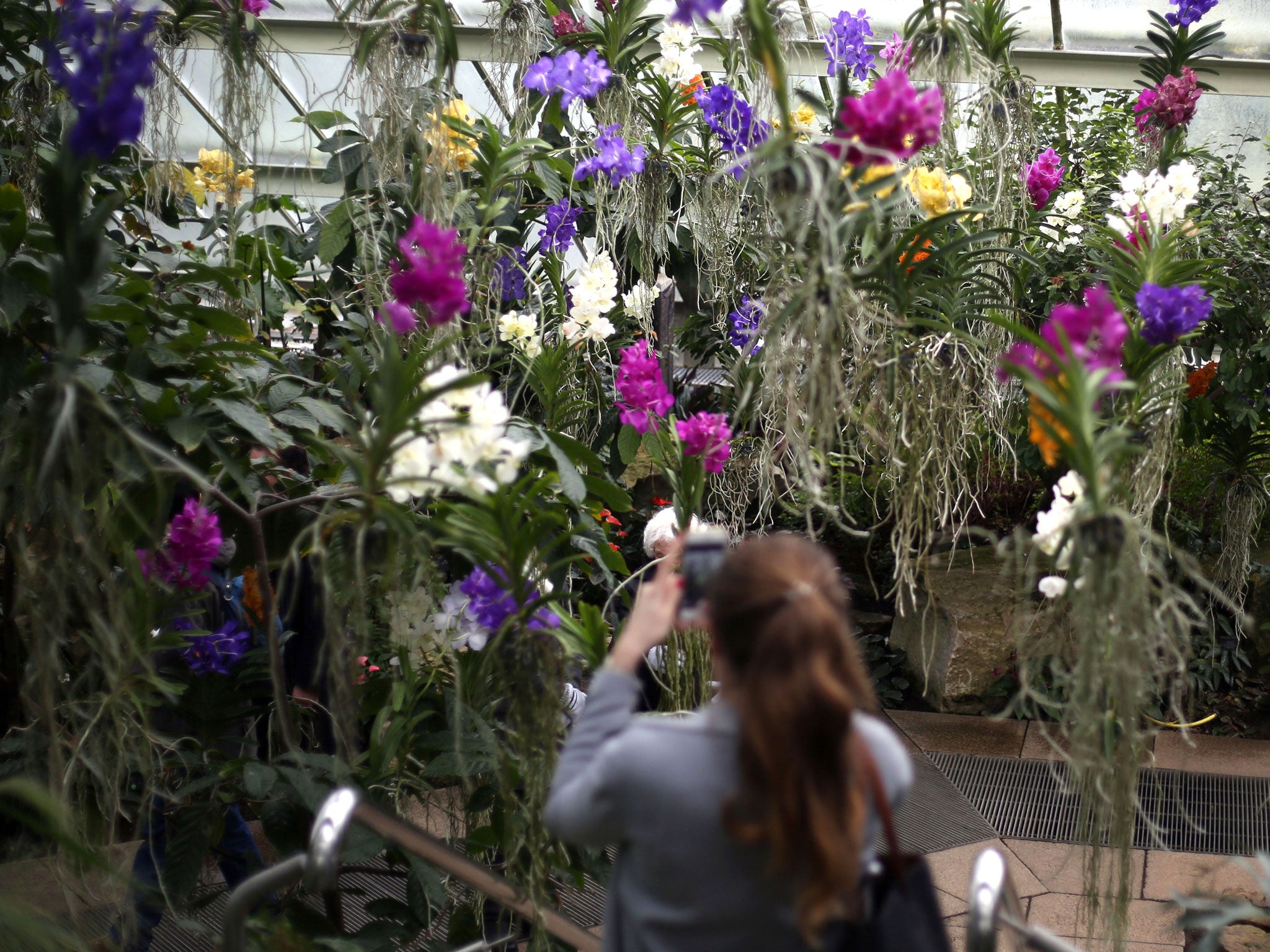Anna Pavord: 'Kew's Orchid Festival is a wonderful display when we're all aching for life and colour'
The festival has a Brazilian theme, with hybrids such as Cambrias and Miltonias displayed alongside the more familiar moth orchids

My husband wanted a new pet. Edith, he said, had become recalcitrant, difficult to deal with. I wasn't surprised. Edith is an agave, and though she could be cooed over very satisfactorily when she was little, she's now got way beyond that kind of relationship. She's huge. And although elegantly striped in grey and cream, she is very spiky. Agaves are perhaps the stiffest, spikiest plants that you can grow outside in Britain. They are not hardy, but it would be a brave frost that dared to take on Edith. That's just as well because she's become too bulky to shift into the greenhouse during winter. She sits, not a pet any more, but a formidable matriarch, overlooking the courtyard at the side of the house.
So, on a trip to Sussex, we called in at McBean's orchid nursery at Cooksbridge, just outside Lewes (mcbeansorchids.co.uk) to see whether here, there might be a more satisfactory object of devotion. The nursery is a surprising place to find, among the oak trees and fields of sheep. You open the door and wham, suddenly you are in Central America, surrounded by the outrageous, leering faces of moth orchids and cymbidiums, vandas and oncidiums. My husband was immediately entranced.
I hoped he might fall in love with one of the easier kinds of orchid. It would be sad if there was another unsatisfactory relationship. So I went very slowly past some superb pots of cymbidium; the species C. erythraeum looked particularly ravishing – long, strappy petals of a complicated khaki, striped in maroon. And it was scented. That was a surprise. I lingered, meaningfully. I pointed out that this was an Indian species (our best journeys are always in India). The orchid was flowering in an outrageously prolific way. But he wasn't hooked. "We've got some of those," he said dismissively. And yes, we have, but nothing as stupendous as this species was.
He entered into deep conversation with the keeper of the orchids at McBean's. They disappeared into the glasshouses behind the display house and half an hour later, my husband emerged, bearing, like the crown jewels, a smallish plastic pot with a few strong, broad leaves growing out of chunks of bark. "Eternal Wind," he said reverently. "Brassia 'Eternal Wind'."
"Easy to care for," said the McBean's man, who must have been reading my mind. "Intermediate light. Intermediate temperature. Intermediate humidity." "And scented," added my husband, who had quickly picked up that this would be a big point in its favour. "Your pet, not mine," I answered. But I was rather impressed he had gone for an orchid that was not yet in flower. And for a brassia, which I've never grown, but which I've often admired.
Its common name is spider orchid, which gives a good indication of what it looks like: five very long spidery legs, three standing up, two hanging down, and a generous, broad lip, a landing pad for the wasp that pollinates it in the forests of South America. The flowers of "Eternal Wind" are a creamy lime colour, thickly spotted and blotched with brown. The flower spikes are tall and each of the flowers can be as much as 30cm/12in long. Most of that is down to the "legs".
So now on the ledge of an east-facing window in the bathroom is this new pet, full of promise. I just hope she delivers. To fill in the waiting time, we went off to the Orchid Festival at the Royal Botanic Gardens, Kew. There were no brassias, that I could see, but plenty of oncidiums massed round the pillars of the Princess of Wales Conservatory. It's a wonderful display to provide at this time of year when we are all aching for life and colour and action outside.
The Kew festival has a Brazilian theme, with hybrids such as Cambrias and Miltonias displayed alongside the more familiar moth orchids (Phalaenopsis). Tunnels of tropical plants curve over the pathways with pitcher plants and bromeliads dangling at eye level. We went on one of the evening openings, which proved such a hit at Kew's last orchid extravaganza. I can see why. The way the place is lit shifts the scene into melodramatic mode. Masses of vandas are suspended from the roof and hang quietly twirling in the warm air coming up from the heating vents. At night, you can't see the wires attaching the plants to the girders, so they appear to be suspended, sustained not by reality but by our imaginations.
The exhibition continues until 6 March (open daily 10am-5.30pm) and there's just one more late-night special. This is on 3 March when the Princess of Wales Conservatory will be open from 6-9.30pm. Tickets are £15.
Subscribe to Independent Premium to bookmark this article
Want to bookmark your favourite articles and stories to read or reference later? Start your Independent Premium subscription today.

Join our commenting forum
Join thought-provoking conversations, follow other Independent readers and see their replies